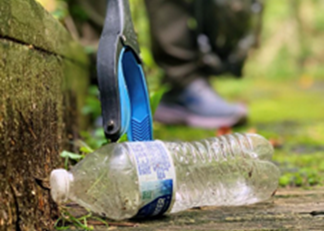Last updated: February 20, 2025
Article
Reducing PFAS in Drinking Water

What are PFAS?
There are thousands of different types of perfluoroalkyl and polyfluoroalkyl substances (PFAS) that people, animals, and ecosystems are exposed to on a regular basis. Something as simple as cooking your breakfast, applying waterproof mascara, or enjoying microwave popcorn can expose you to PFAS.PFAS are a group of manmade chemicals that have been used in both consumer and commercial products since the 1950s. PFAS have properties that resist heat, grease, water, and other substances. The characteristics that make PFAS useful are the same characteristics that make them harmful to the environment and humans. Most individuals have come in contact with them before. Some common items that intentionally include PFAS are items like nonstick cookware, water repellent outdoor gear, carpets, food packaging, and even firefighting foam. Some items contain PFAS unintentionally due to contamination. For example, a factory may use PFAS-containing equipment or lubricant during the production process that results in a contaminated product or produce may be grown in contaminated soil.
While scientists are still learning about the effects of PFAS in our environment, there are studies showing negative effects on human health with higher exposure. PFAS are so pervasive that they can be detected in the air, water, soil, and the human body worldwide. PFAS exposure is linked to problems such as cancer, obesity, thyroid disease, high cholesterol, decreased fertility, liver damage, and hormone suppression, according to the US Environmental Protection Agency.
Some products unexpectedly use PFAS including, but not limited to:
- Ski wax
- Commercial and domestic cleaning products
- Stain resistant upholstery and carpet
- Paints and varnishes
- Mattresses and pillows
Concessioner Applications
Concessioners can limit the amount of PFAS in the environment and around themselves, staff, and visitors by avoiding the use of products containing PFAS. Below are some considerations based on services that concessioners may consider as they move towards a PFAS-free operation.Guide service and outfitter concessioners: Consider identifying outdoor equipment (e.g., tents, waterproof pouches, rain gear, and backpacks) that are free of PFAS.
Food service concessioners: Consider removing non-stick pans from use, finding alternatives to food packaged in PFAS containing wrappers, bags, and containers.
Lodging concessioners: Consider replacing shower curtain liners, pillows, and mattresses with alternatives that do not contain PFAS.Note that replacing products can occur over time. In an effort to reduce waste and delay the impact on the environment, consider replacing items on an as-needed basis.
Emerging Solutions
As the understanding of PFAS evolves, new technologies and approaches to removing the chemicals from waterways are emerging.Activated carbon treatment is the most widely studied solution to removing PFAS from our drinking water. Activated carbon is the same type of filtration used in at home water filters.High pressure membranes have proven to be extremely effective in removing PFAS from water. Nanofiltration membranes are able to remove PFAS without removing beneficial minerals from the water. Researchers note that this type of filtration may be best for household use since the volume of water that can be treated is smaller and the waste stream can be disposed of more easily.A biodegradable sponge collects microplastics that contain PFAS; however, due to the biodegradable makeup of the sponge, it poses its own risk to the environment. One component of the sponge is made of squid carcasses. Producing the sponges at a high scale creates its own risks to the environment, squids, and the ecosystems they participate in. The ingredient is what makes the sponge biodegradable and environmentally sound.
